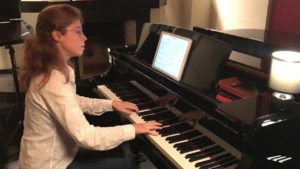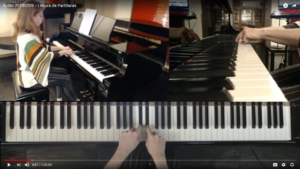Get ready to make the most out of PianoClass since your very first lesson.
A well-tuned acoustic piano is the best, but an 88-keys digital keyboard can be used initially.
Wire connect your computer directly to the internet provider router/modem. If you must use Wi-fi (not recommended), at least be sure there are no obstacles between the access point and your computer.
Visit https://speedtest.net website to test your connection.
At PianoClass, our results are:
ping: 2 ms || download: 900 Mbps || upload: 200 Mbps
We expect our student to have at least:
ping: below 40 ms || download: above 15 Mbps || upolad: above 10 Mbps
If necessary, you may use a tablet or, as a last resource, a smartphone. In this case, you must use wired earphones.
Put on your earphones and play the piano. If you can clearly hear your own piano, your earphones are approved. Never use earphones with noise cancelation or that completely cover your ears.
Choose from
Intall, sign in and set it according to the How to use Zoom at PianoClass instructions on your computer and tablet/smartphone (to be safe).
Have all learning material sent by your teacher at hand. Be sure to have access to the Google Drive folder shared with you.
You may use a tablet with the Google Drive app and a PDF editor of your preference (such as the free option of Adobe Acrobat) to see and write on your sheet music and other materials.
Using a tablet also makes accessing other learning apps and orchestral accompaniment easier.
Remember to charge your device before each lesson.
Print the material shared with you on Google Drive and have a pencil, eraser, and extra paper at hand to take notes during your lesson and your practices.
Be ready to print new material if needed during lessons and have the Google Drive at hand on your Smartphone as well.
Place your primary camera by the side of your piano so that we can see everything from your face to the upper part of your bench. It should be high enough to have the keyboard, your arm and hand movements, your back, and your neck visible.


If you have more than one camera, you may place one at the side of the piano to show some details of your hands or have it over the keyboard.
As you wish. It would be better to have it in a place where you could see it even when playing the piano.
Place your mic in a place it may acquire a balanced sound from the piano and your voice. You may test it with a friend, recording, or at the Technical Rehearsal with your teacher.
Use as much light as possible! But be careful so the main light source